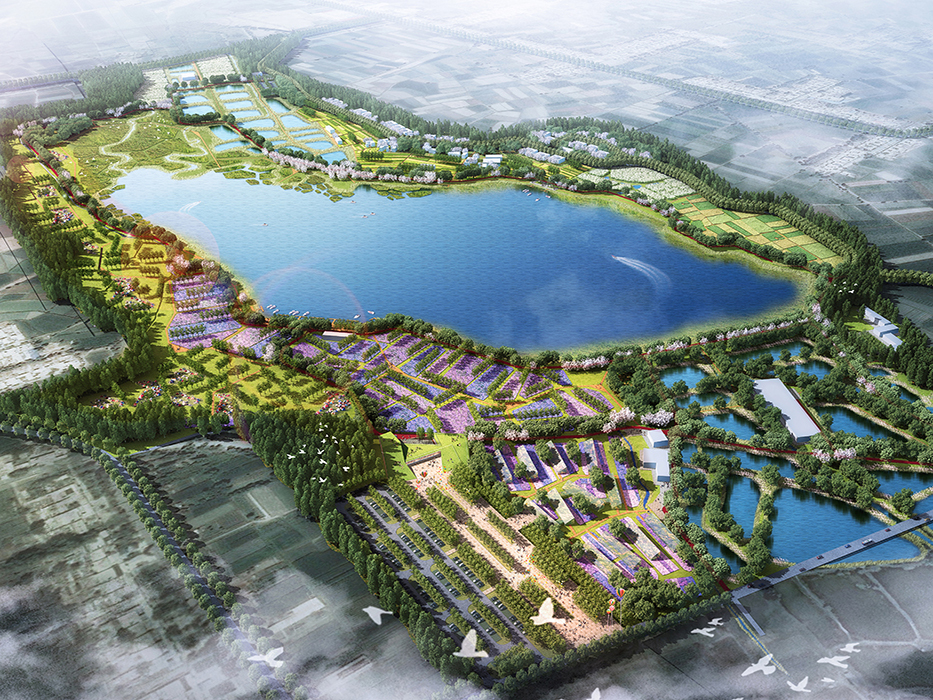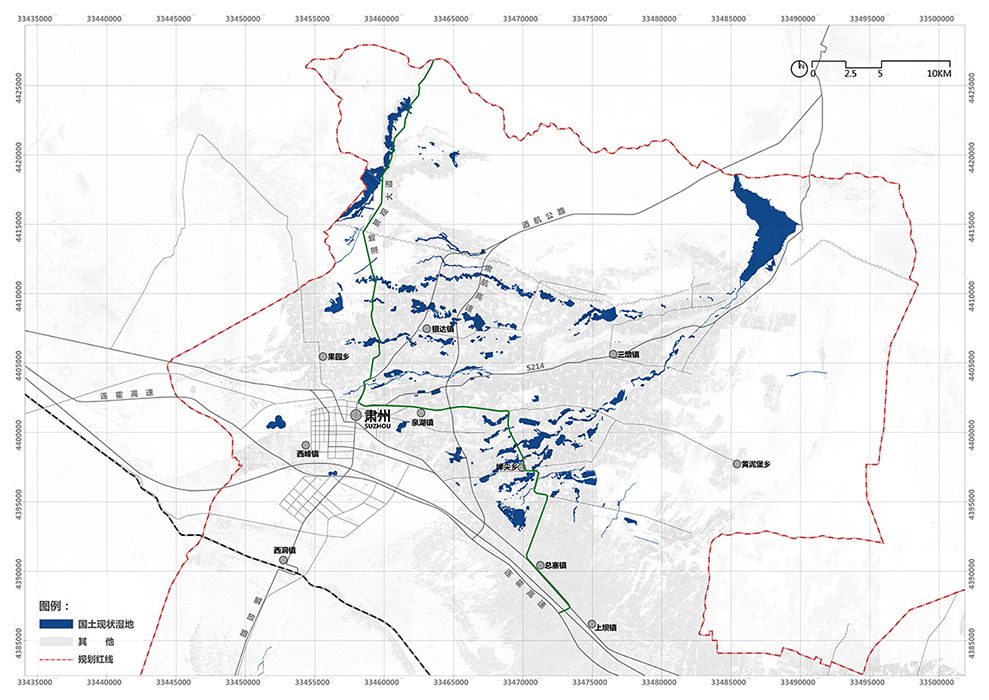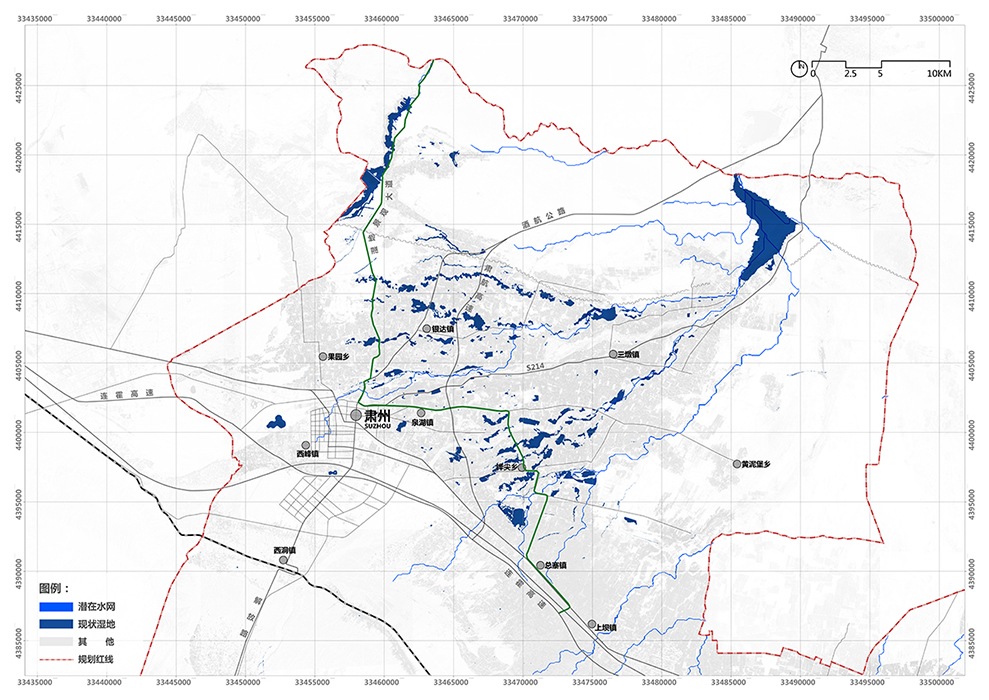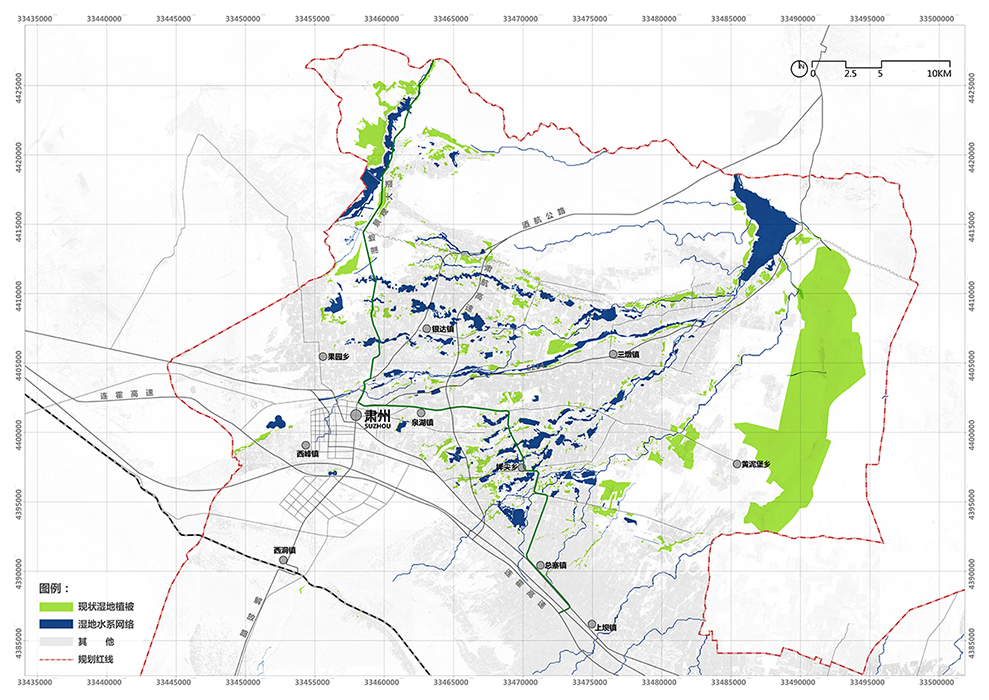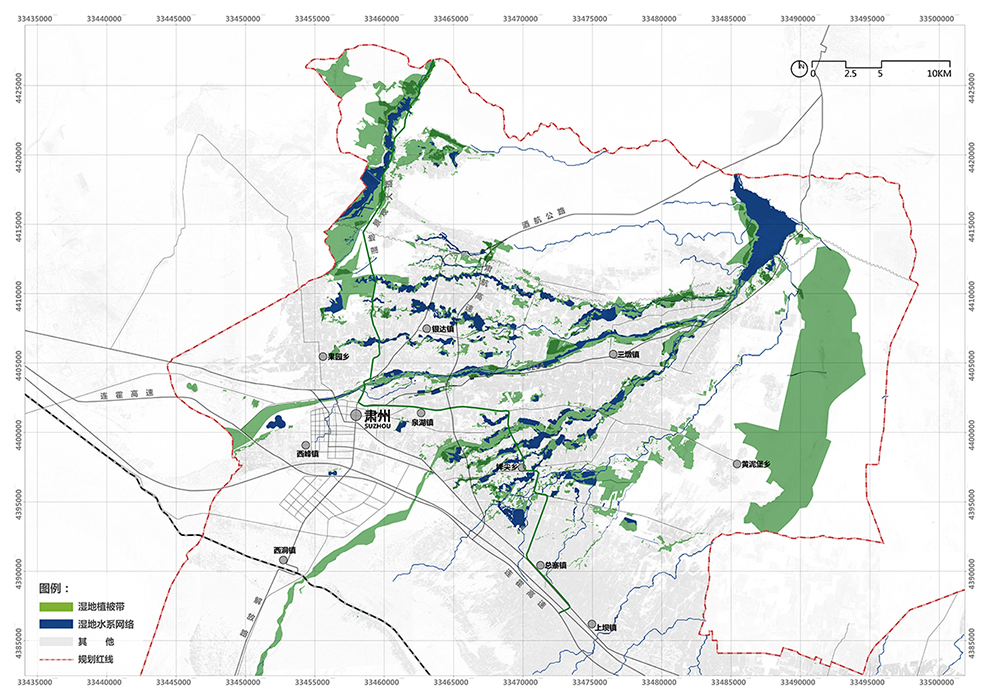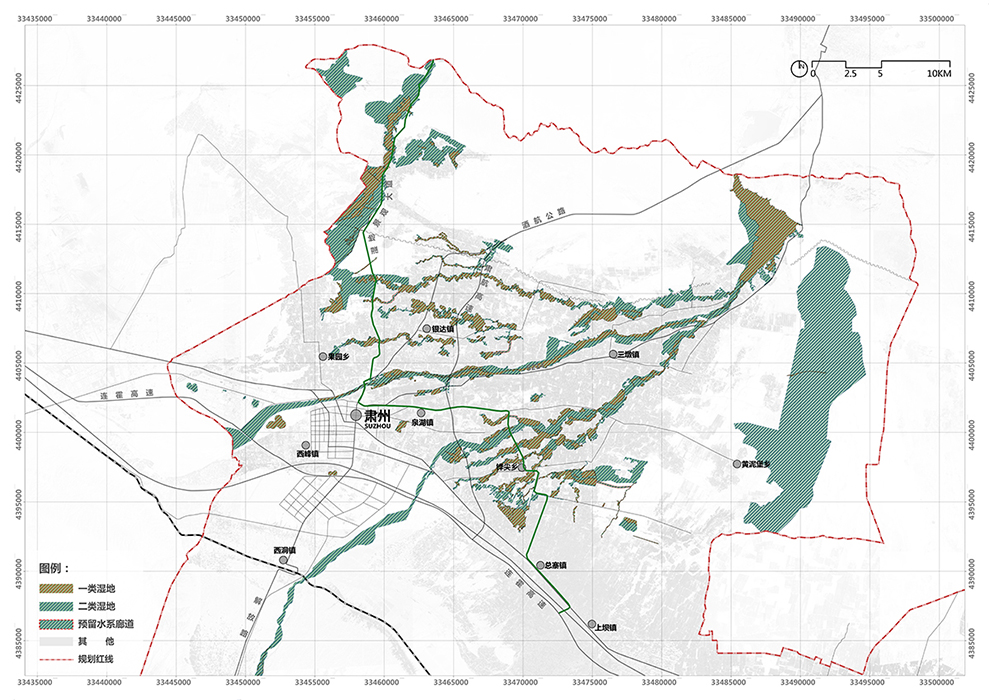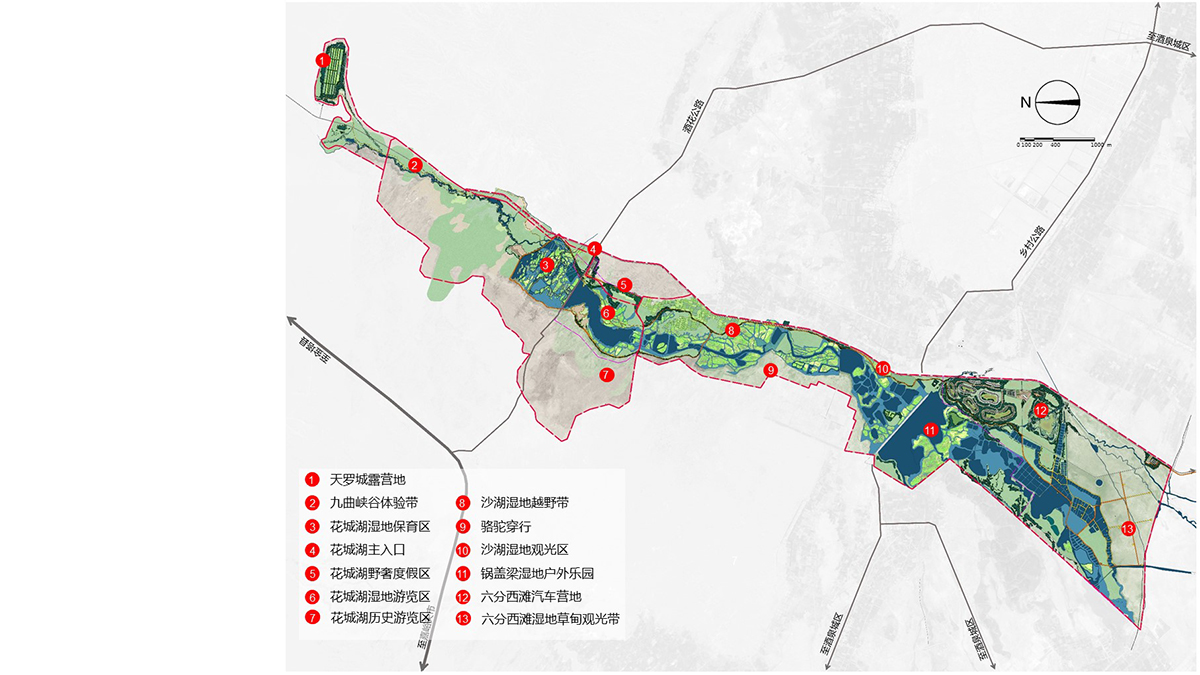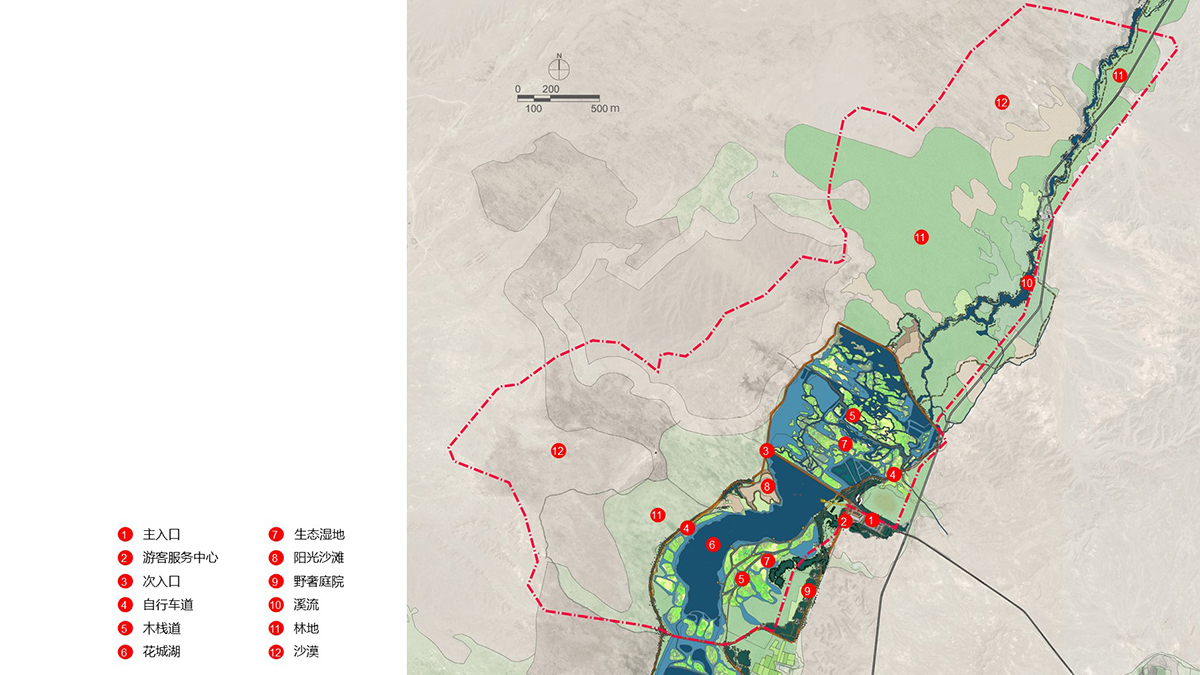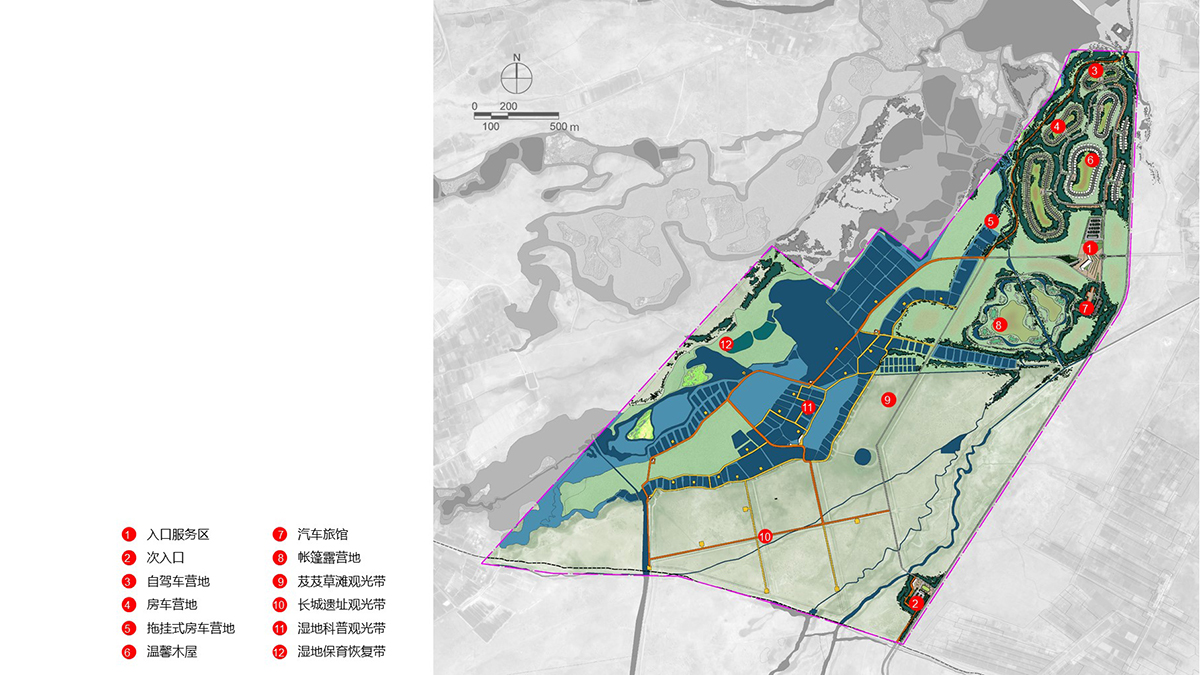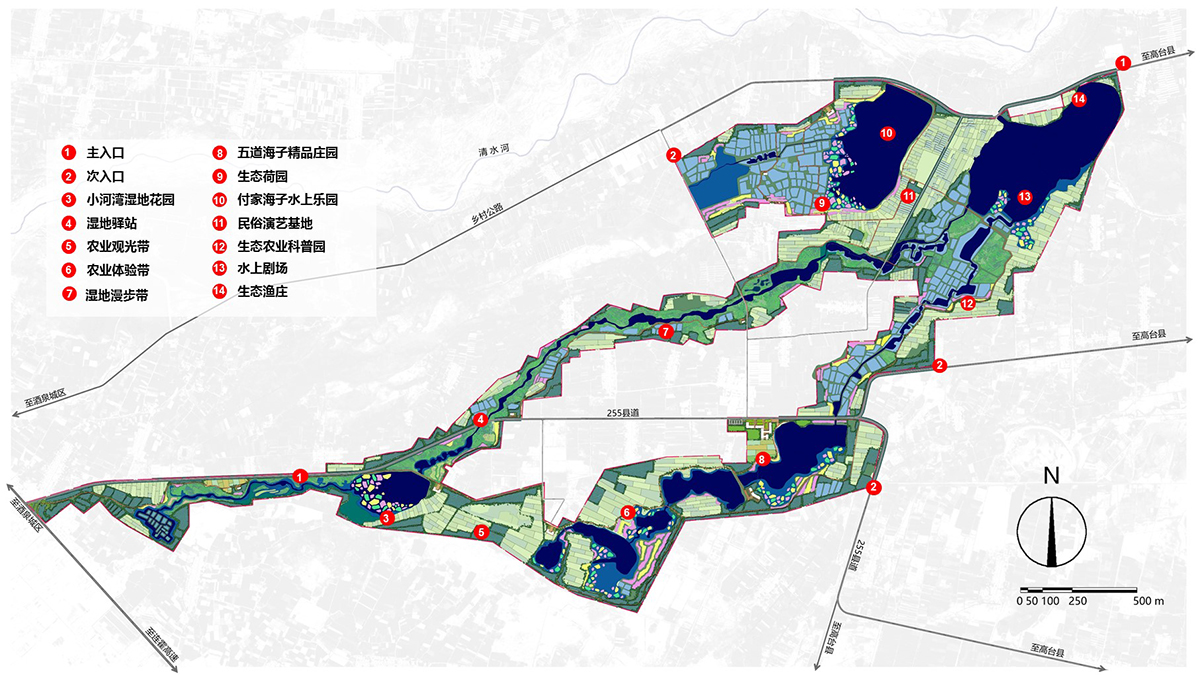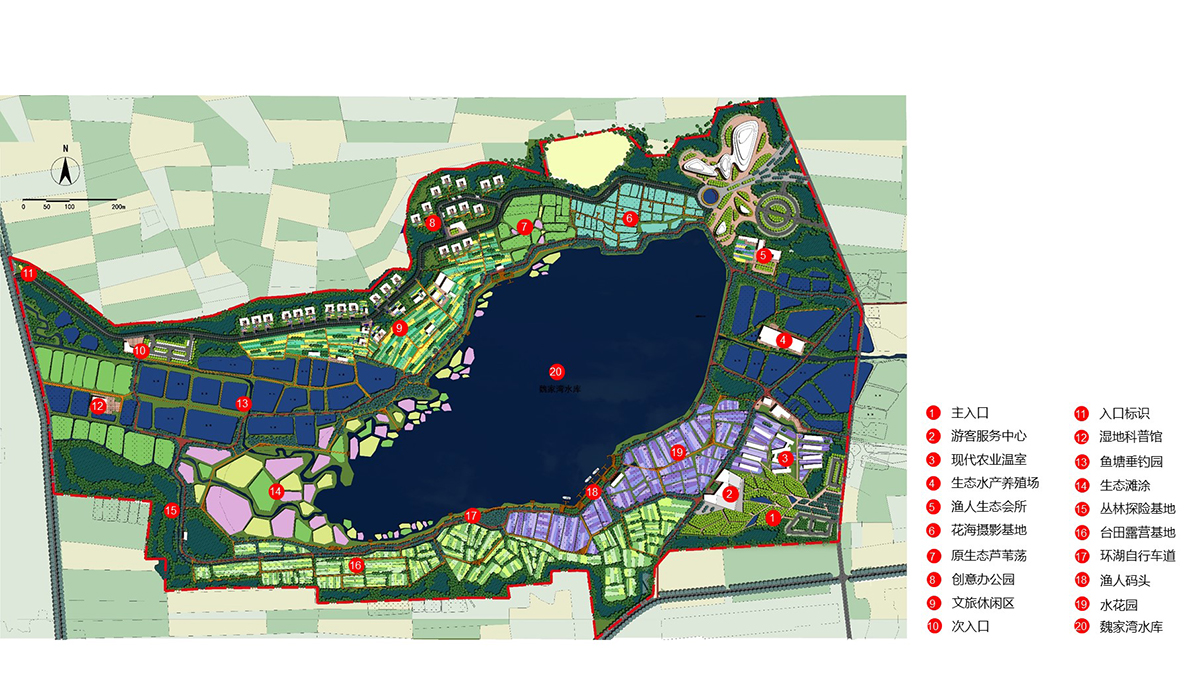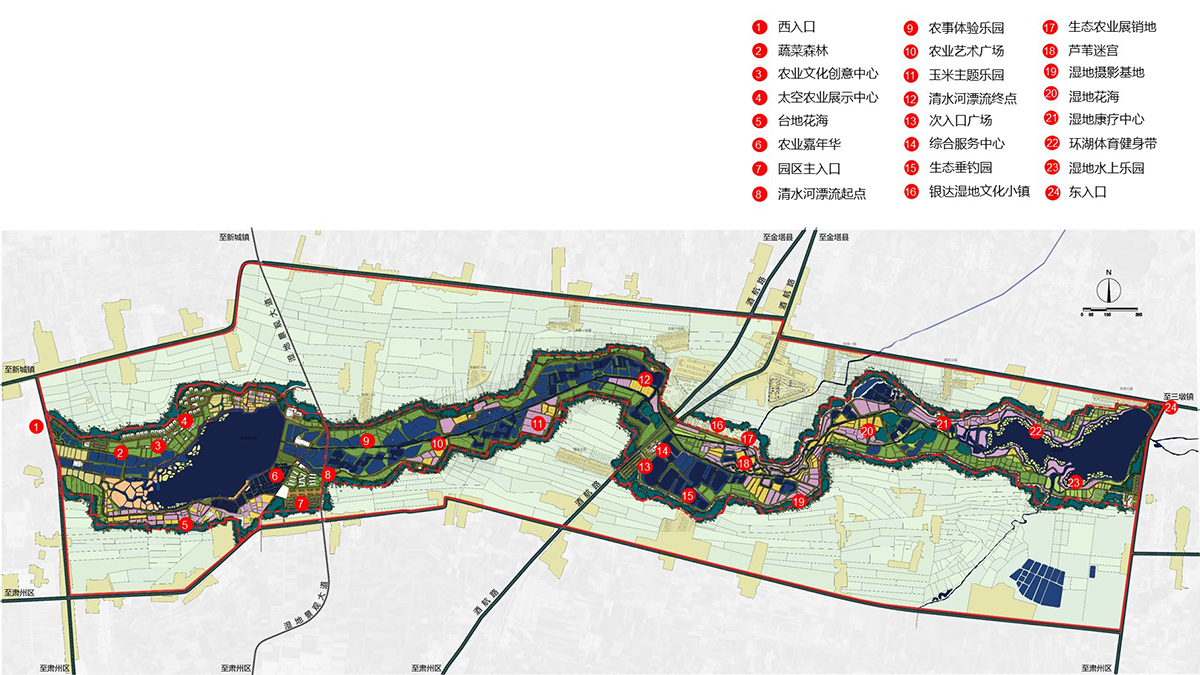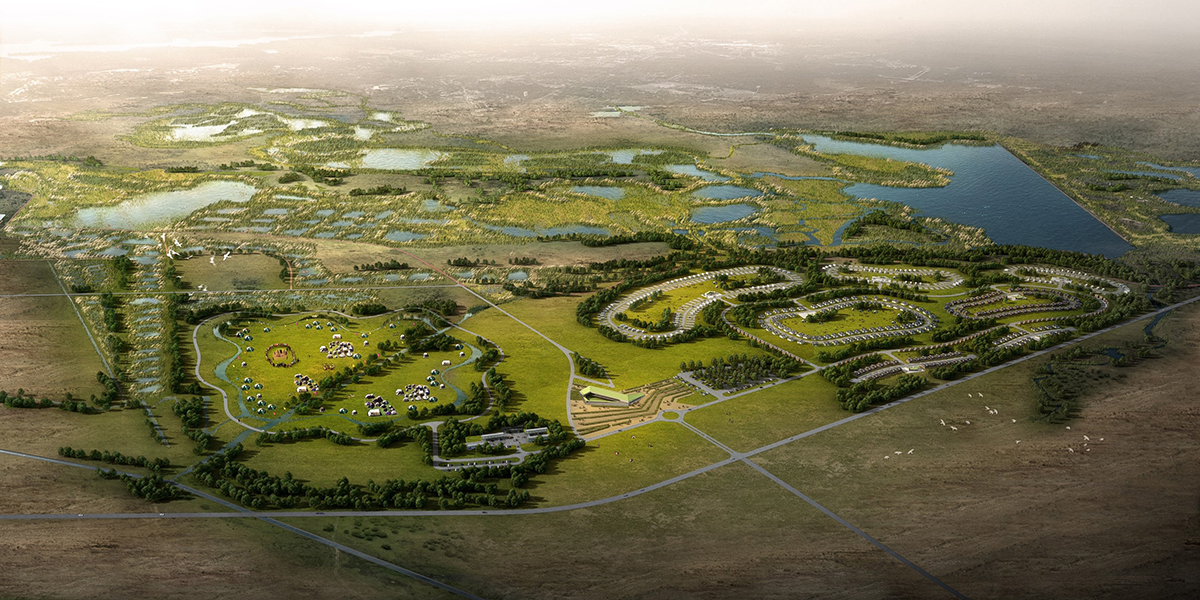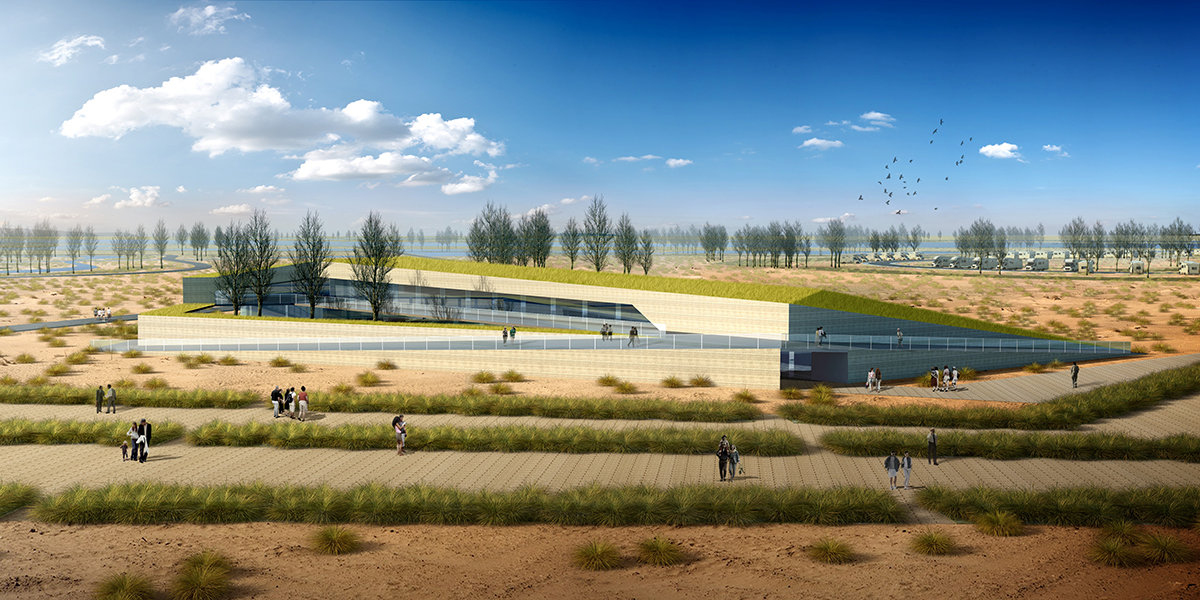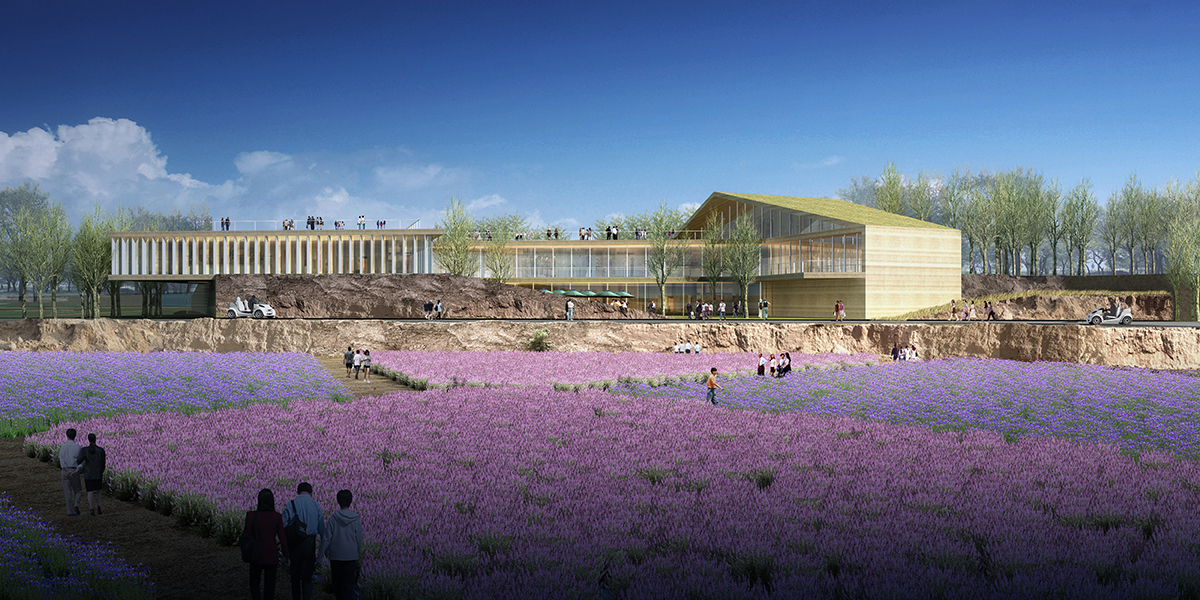Jiuquan Suzhou District Wetland Protection Planning
Project Information
- Project Location:
- Jiuquan, Gansu
- Project Scale:
- 243.3 Square Kilometers
- Design Time:
- December 2015
- Client:
- Jiuquan Suzhou District Forestry Bureau
Project Profile
1. Project Statement
Suzhou District is located in the western part of Gansu Province and serves as the political, economic, and cultural center of Jiuquan City. The region has abundant natural wetland resources, but due to climate change and human activities, some areas have experienced declines in wetland ecological functions, disruptions in ecological corridors, and reductions in biodiversity. These issues severely impact national land and ecological security. This project aims to scientifically restore degraded wetlands, expand the wetland protection network, and enhance the sustainable development of wetland ecosystems. It also aims to guide the construction of Suzhou District into a livable and touristic eco-tourism demonstration area.
2. Objective and Challenge
2.1 Problem and Challenge
The wetlands in Suzhou District currently face five main problems:
- Blind reclamation and modification of wetlands.
- Increased pollution of wetlands.
- Overexploitation of biological resources.
- Severe sediment accumulation.
- Irrational use of wetland water resources.
2.2 Objective
The planning period is from 2016 to 2030, with a defined wetland protection area of 365,000 mu (approximately 243.3 square kilometers). The short-term goal (2016-2020) is to establish a wetland protection and supervision system, delineate wetland protection boundaries, implement water system connectivity projects to restore degraded wetlands, and promote the importance of wetlands to raise public awareness and environmental protection. The medium- and long-term goals (2021-2030) include implementing farmland-to-wetland projects, protecting habitats for flora and fauna, enhancing ecological water replenishment and water system connectivity, achieving a wetland recovery rate of over 90%, fundamentally solving wetland ecological service functions, improving Suzhou District’s ecological security, and coordinating regional economic development to achieve comprehensive benefits.
3. Design Strategy
Wetland water systems are the core of wetland protection. The current natural wetland water system in Suzhou District mainly relies on groundwater replenishment, with discontinuous connections between water bodies, forming a fragmented distribution. The design strategy to link these fragmented wetlands into a complete wetland ecological protection area includes the following five points:
- Protect 85,000 mu of native wetlands without blindly excavating water surfaces and strictly controlling water pollution based on local natural hydrological conditions.
- Use ArcGIS analysis to determine that Suzhou District needs to protect and restore about 369.4 km of wetland corridors. Large river systems need to restore the natural shape of corridors, small ditches should retain their water bodies and enrich water depths, and potential linear depressions or seasonal ditches can connect with the overall water system.
- Encouraged by regulatory authorities, implement farmland-to-wetland projects in some areas. Ecological landscapes within wetlands should use plants with well-developed stems and leaves to absorb water system pollutants and slow down sedimentation. Wetland banks should mainly use ecological revetments, prohibiting hard revetments to strictly protect the current wetland ecological environment.
- Construct wetland vegetation buffer zones based on the wetland water system framework to stabilize biological communities. Establish noise buffer zones with mainly trees and shrubs near disturbance sources and set up ecological fences and warning signs on the periphery to prevent human destruction, protecting habitats for flora and fauna to form a good wetland ecological environment system.
- Expand the comprehensive protection scope while ensuring the baseline area of 334,000 mu of current wetlands, defining a total ecological restoration and protection area of 365,000 mu.
4. Conclusion
The overall plan for wetland protection in Suzhou District aims to create a "mountain-water-forest-field-lake-grass" inland river wetland protection demonstration area, defining a total wetland protection area of 365,000 mu. Among them, Class I wetlands cover 90,000 mu, including Huacheng Lake National Wetland Park and important municipal and district wetlands, forming the core and key protection areas where all production and business construction is prohibited. Class II wetlands cover 275,000 mu, mainly including general municipal and district wetlands, distributed in the periphery of Class I wetlands, where moderate construction is allowed with approval and demonstration from relevant departments.
4.1 In Wetland Protection
A "three zones and five belts" wetland protection layout is formed, with wetland protection subareas as units and water as corridors. The three zones are:
- Huacheng Lake Wetland Protection Zone: Comprising the marsh wetlands in the Liufen West Beach-Guogaoliang Reservoir-Huacheng Lake area, including four protection subareas with a total area of about 50,000 mu.
- Huajian Town Wetland Protection Zone: Comprising artificial wetlands such as Jiaojiazui Reservoir and Fujiahai Reservoir in Huajian Town, including twelve protection subareas with a total area of about 33,000 mu.
- Yuanyangchi Wetland Protection Zone: Centered around the Yuanyangchi Reservoir, with a total area of about 28,000 mu.
The five belts are:
- Bianwantan-Jiabian Ditch Wetland Protection Belt: Including six protection subareas with a total area of about 23,000 mu.
- Qingshui River Wetland Protection Belt: Including six protection subareas with a total area of about 29,000 mu.
- Beida River Wetland Protection Belt: Including four protection subareas with a total area of about 35,000 mu.
- Linshui River Wetland Protection Belt: Including six protection subareas with a total area of about 43,000 mu.
- Wild Boar Ditch Wetland Protection Belt: Centered around the Wild Boar Ditch, with a total area of about 124,000 mu.
The plan identifies three key Class I wetland protection and restoration projects: boundary marker projects (807 km), water system waterway connectivity projects (7.1 km), and wetland monitoring projects (3 stations). It also identifies five key Class II wetland protection and restoration projects: ecological water replenishment projects, farmland-to-wetland projects (8,500 mu), ecological revetment and vegetation buffer zone construction projects (29.1 km), flora and fauna habitat restoration projects (5,400 mu), wetland vegetation restoration projects, and watershed water resource allocation management.
4.2 In Wetland Utilization
The plan aims to create a "national-level desert wetland eco-tourism demonstration area," with a spatial layout of "one city, two towns, multiple points, one belt, five corridors, three zones" for wetland tourism industry development, creating a new tourism brand "Wetland Scroll, Beautiful Suzhou." The focus is on developing four major industries: eco-tourism, cultural creativity, agricultural leisure, and outdoor sports. The priority is to develop three key zones and a north-south wetland landscape avenue of about 27 km:
- Huacheng Lake Wetland: Total area of about 1,942 hectares, positioned as a gobi outdoor leisure wetland park, mainly serving tourists, outdoor enthusiasts, and business travelers.
- Qingshui River Wetland Park: Total area of about 353 hectares, positioned as a suburban agricultural leisure wetland park, mainly serving ordinary citizens.
- Huajian Wetland Park: Total area of about 906 hectares, positioned as a rural resort wetland park, mainly serving urban residents and business travelers.
The wetland landscape avenue connects diverse scenic spots like gobi, wilderness, farmland, city, and manor, offering a variety of 1-2 day tour routes in Suzhou District for visitors to enjoy a rich and colorful travel experience.
In summary, the overall plan for wetland protection in Suzhou District aims to promote tourism industry development while ensuring ecological protection, helping more people recognize and understand Suzhou. The sustainable development of the eco-tourism industry under a good wetland restoration management mechanism will have a profound impact on the development of Suzhou District and Jiuquan City.
